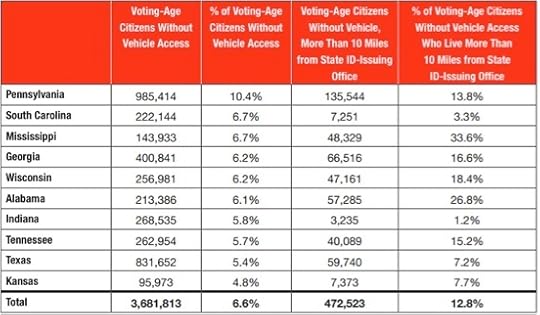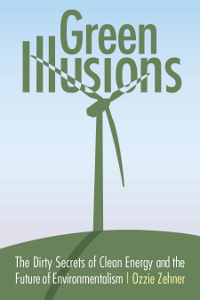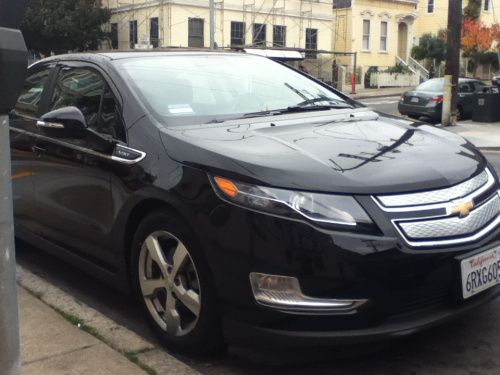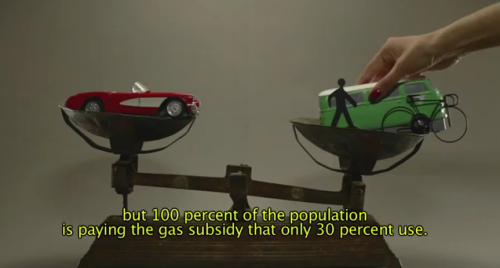Ozzie Zehner's Blog, page 3
August 9, 2012
Can’t Drive? Can’t vote.
Can’t Drive? Can’t vote.
OZZIE ZEHNER
In the United States, democracy is designed for those who can drive – especially if living in states with new voter ID laws.
Suburbia is upping the bar of democracy for poor Americans according to a study by the Brennan Center for Justice at New York University School of Law [PDF]. For instance, a third of Mississippi residents without vehicle access live more than ten miles from an ID-issuing office. In a state with little public transit infrastructure, the stresses on democratic representation become monumental.
The report points out that “voter ID laws are especially burdensome for citizens in high-poverty areas. Not only are these eligible voters among the least likely to have photo ID, they are also among the least likely to have access to government services, such as public transportation.”
Of the voter ID states, Pennsylvania is the largest investor in transit at $94.77 per resident. Compare that to New York, which invests $224.85 per capita in transit, the nation’s highest.
Meanwhile, Wisconsin spends $22.31 per capita on transit. Indiana just $8.63. Mississippi and Georgia invest less than a dollar. The State of Alabama invests nothing.
Fran Taylor from DC Streets Blog claims that “new state laws mandating photo ID for voters threaten to disenfranchise nondrivers, and the skewed elections that would result could lead to political control by forces hostile to transit, cities, and even Safe Routes to Schools.” As fossil fuel prices become more volatile, so may legislative support for the very transit investments we’ll need to deal with the shocks – investments that citizens overwhelmingly support.
The United States is a country of freedom and democracy for all. If you can get there.
Read reviews of my new environmental book:


July 27, 2012
Huffington Post Reviews Green Illusions
The Huffington Post’s Tom Zeller discussed Green Illusions in a post today:
If his goal was to capture attention by tweaking the nose of clean-energy enthusiasts everywhere, Ozzie Zehner might well have succeeded. His new book, published last month and provocatively titled “Green Illusions: The Dirty Secrets of Clean Energy and the Future of Environmentalism,” takes on what Zehner considers the sacred cows of the green movement: solar power, wind power and electric vehicles, among others.
Of course, the book is much more than just this, and Zehner, a visiting professor at the University of California, Berkeley’s Science, Technology & Society Center, describes himself as being neither for nor against any particular energy source. Indeed, his core objection appears to be with technology fixes in general, or the conviction that any bit of technological derring-do — be it a high-efficiency photovoltaic cell or a low-emissions vehicle — will be sufficient to nudge the planet from unpleasant trajectories like global warming.
Such beliefs, Zehner argues, can blind policymakers and other stakeholders to the attending downsides of any new innovation (there always are downsides); to other, arguably less expensive solutions; and to other pressing global problems.
As the basis for thoughtful discussion, all of this is perfectly reasonable. But Zehner is also clearly playing the provocateur here, and it appears to have been a wise gambit, given the sonorous harrumphing the book has generated in green circles… read the full review of Green Illusions


July 20, 2012
When is “green” technology a bad thing?
I spoke about electric cars, solar cells, population growth, and capitalism with Brian Edwards-Tiekert, a radio journalist who has won multiple awards for his feature reporting and radio documentary work on environmental issues | 30 min | Link: Ozzie Zehner on Berkeley Public Radio
See more about the environmental book John Perkins is endorsing.


July 6, 2012
Challenges Envisioning a Nuclear-Free Germany
Challenges Envisioning a Nuclear-Free Germany
Ozzie Zehner
Can Germany go Nuc Free? That’s the plan for 2022. But due to a phenomenon economists call “leakage,” will a nuclear-free Germany remain an illusion?
Bloomberg Businessweek reports that even though Germany plans to shut down its reactors, the country now pays $139 million monthly to import electricity, some of it from Czech nuclear plants:
With the remaining nine German reactors scheduled to go offline by 2022, no one seems more eager to step into the breach than the Czechs. They’re in talks with vendors to build two more reactors at Temelín, while planning new reactors at the aging Dukovany nuclear station and at least two other sites… “Nuclear is the answer,” says Roman Portužák, who is involved in drawing up the country’s energy strategy at the Czech Industry and Trade Ministry. “How fast, how many reactors we’ll build—that’s still under discussion, but we’re definitely moving in this direction.”
Germany also imports stored nuclear power via Austria. Building luxury cars is energy intensive.
Germans expect renewables such as solar and wind energy to take up the slack, but taxpayers are less keen on paying for them. Germany is in the process of slashing subsidies that have spurred renewable energy growth throughout the country.
Germany has also exported energy-intensive smelting and heavy industrial operations to China and other countries, which has gotten those energy inputs off Germany’s tally. But the resulting raw materials and components are then shipped back to Germany.
Germany’s awkward energy contortions point to the complex global challenges and fuzzy accounting that pass for energy policy today. Perhaps Germany can go low-energy only if others do not.
– Ozzie Zehner is the author of the renewable energy book, Green Illusions
See more about the environmental book John Perkins is endorsing:
June 6, 2012
Green Illusions Hits #2 in Kindle Energy
Thank you to everyone for supporting my new environmental book Green Illusions. The Kindle version popped up to the #2 slot in its category for a short time today. See the current ranking here: Top Energy Books.
You don’t have to buy Green Illusions to read it – just call your local library and ask them to purchase the book if they have not already done so. Input your zip code and at Library Search for the phone number.
See more about the book John Perkins is endorsing here.








May 21, 2012
Video: 5 Reasons to Bicycle
This is a recent Danish video from the city of Aarhus, which may offer a glimpse into the future of bicycling through North American cities. Here are the translated points:
Reason 674: Big smiles
Reason 762: Fitness and fresh air
Reason 2,548: Speed through traffic
Reason 6,237: Quality time with the kids
Reason 94: CO2-neutral transport
See more about the the future of transportation here.








May 14, 2012
New Infographic: How Much Do Americans Support Bike Lanes?
A new report and corresponding infographic (above) by AmericaBikes.org show broad support for bicycle infrastructure funding in the United States. For me, it was fascinating to learn that this support crossed party lines and geographic boundaries. Here are some findings from the study:
83% of those interviewed support preserving or growing federal funding for sidewalks, bike infrastructure.
80% of Republicans and 88 percent of Democrats think Congress should preserve or increase funding for biking and walking.
85% of Northeasterners, 79 percent of Midwesterners, 84 percent of Southerners, and 84 percent of Westerners support preservation or increased funding for sidewalk and bicycle infrastructure.
91% of those interviewed between the ages of 18 and 29 support preservation or increased funding for sidewalk and bicycle infrastructure.
For more details on the study, see: AmericaBikes.org
See more about the book John Perkins is endorsing here.








May 12, 2012
Prospects for Solar, Zero-energy Buildings and Air Conditioning
Rick Docksai, an editor at The Futurist magazine, recently invited me for an interview to discuss the future of global energy supply. We discussed the prospects for Germany’s solar initiative, the whole truth behind so-called zero-energy buildings, and the fate of air-conditioning. You may read the interview here.
See more about the book John Perkins is endorsing.








April 16, 2012
Are Electric Cars Carbon Free? Some Perspective on Plugging In
According to a report released today by the Union of Concerned Scientists, the carbon impacts of fueling your electric car depend on where you plug it in. The study, entitled “State of Charge: Electric Vehicles’ Global Warming Emissions and Fuel Cost Savings Across the United States,” points out that charging an electric vehicle with coal-based electricity yields the same carbon impact as at conventional car that gets 30 miles per gallon (mpg). If the charging power comes from hydroelectric and natural gas, prevalent in the pacific northwest, the carbon impacts of fueling an electric car equate to over 50mpg, according to the study.
These figures do not account for electric car fabrication footprints, which can have a much larger impact than the fueling cycle according to research from the National Academies of Science. In my recent piece in Christian Science Monitor, I argue:
Electric vehicles don’t eliminate the negative side effects of vehicular travel. They simply move the problems elsewhere – often to contexts where they become more opaque and difficult to address. When we start to exchange one set of side effects for another, the exchange rates become confusing. This opens a space for public relations firms, news pundits, environmentalists, and others to step in and define the terms of exchange to their liking.. The Union of Concerned Scientists report also doesn’t account for the methane released during natural gas fracking, the side effects of hydroelectric dams, and other externalities from energy production.
When the full environmental costs of electric car batteries and hardware are figured in, their green charm begins to appear suspect. Perhaps environmentalists should take a step back and reconsider whether they’d like to become spokespeople for the next round of ecological disaster machines.
See more about the book John Perkins is endorsing here.








April 13, 2012
The Real Costs of Car Use
I enjoyed this 4-minute video from the Mexican office of the Institute for Transportation and Development Policy that exposes some of the basic injustices behind transportation funding. The video explains why building more roads won’t reduce congestion and uncovers the real impact of free parking. Thanks to StreetsBlog and Copenhaganize for bringing this video to my attention.
Discover more about Green Illusions here.































